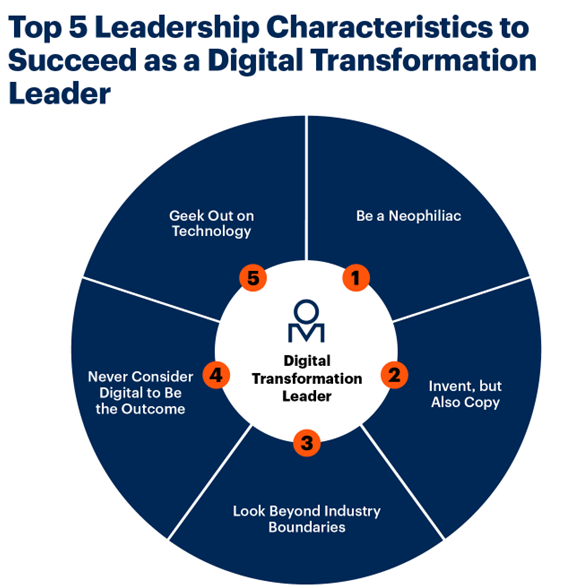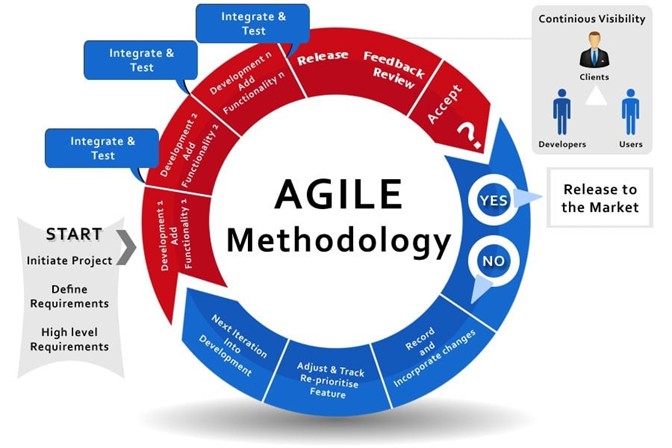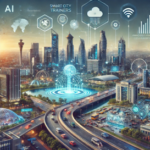Technology Leadership

The Appleton Greene Corporate Training Program (CTP) for Technology Leadership is provided by Mr. Prasad Certified Learning Provider (CLP). Program Specifications: Monthly cost USD$2,500.00; Monthly Workshops 6 hours; Monthly Support 4 hours; Program Duration 12 months; Program orders subject to ongoing availability.

Personal Profile
To be provided.
To request further information about Mr. Prasad through Appleton Greene, please Click Here.
(CLP) Programs
Appleton Greene corporate training programs are all process-driven. They are used as vehicles to implement tangible business processes within clients’ organizations, together with training, support and facilitation during the use of these processes. Corporate training programs are therefore implemented over a sustainable period of time, that is to say, between 1 year (incorporating 12 monthly workshops), and 4 years (incorporating 48 monthly workshops). Your program information guide will specify how long each program takes to complete. Each monthly workshop takes 6 hours to implement and can be undertaken either on the client’s premises, an Appleton Greene serviced office, or online via the internet. This enables clients to implement each part of their business process, before moving onto the next stage of the program and enables employees to plan their study time around their current work commitments. The result is far greater program benefit, over a more sustainable period of time and a significantly improved return on investment.
Appleton Greene uses standard and bespoke corporate training programs as vessels to transfer business process improvement knowledge into the heart of our clients’ organizations. Each individual program focuses upon the implementation of a specific business process, which enables clients to easily quantify their return on investment. There are hundreds of established Appleton Greene corporate training products now available to clients within customer services, e-business, finance, globalization, human resources, information technology, legal, management, marketing and production. It does not matter whether a client’s employees are located within one office, or an unlimited number of international offices, we can still bring them together to learn and implement specific business processes collectively. Our approach to global localization enables us to provide clients with a truly international service with that all important personal touch. Appleton Greene corporate training programs can be provided virtually or locally and they are all unique in that they individually focus upon a specific business function. All (CLP) programs are implemented over a sustainable period of time, usually between 1-4 years, incorporating 12-48 monthly workshops and professional support is consistently provided during this time by qualified learning providers and where appropriate, by Accredited Consultants.
Executive summary
Technology Leadership
Aspiring technology leaders face a multitude of challenges as they strive to drive innovation, inspire teams, and lead through digital transformation. The Technology Leadership program is a 12-month, comprehensive workshop designed to address the following 10 common pain points, providing participants with the tools, strategies, and frameworks needed to excel in today’s tech-driven market.
1. Defining a Strategic Vision
As an aspiring technology leader, you may feel immense pressure to define a technology strategy that not only propels innovation but also aligns with overarching business objectives. Every emerging trend—AI, IoT, cloud, quantum computing—seems to demand attention, and it’s not always clear whether you should invest early or wait until the technology matures. Meanwhile, stakeholders expect clear direction, sustainable growth, and immediate results, which can lead to strategic paralysis. Balancing ambition with pragmatism often feels like a tug-of-war, leaving you uncertain about how to prioritize initiatives effectively.
The Technology Leadership program introduces proven frameworks for strategic foresight, helping you sift through emerging technologies and align them with genuine business value. You’ll learn how to perform a gap analysis of your organization’s capabilities, map out the most relevant tech trends, and prioritize initiatives based on ROI and feasibility. Through collaborative workshops and scenario-planning exercises, participants gain the confidence to articulate a compelling, future-focused vision that resonates with both executive stakeholders and operational teams.
2. Building High-Performance Teams
You know that cohesive, high-performing teams form the backbone of successful tech initiatives, yet building and sustaining these teams can be daunting. You may have experienced talented individuals clashing due to interpersonal issues or failing to collaborate effectively across different functional areas. Additionally, the dynamic nature of technology work—where deadlines can shift, and problems often arise unexpectedly—can strain team morale. Maintaining a culture of trust, motivation, and shared purpose becomes increasingly challenging as your organization grows or adopts remote/hybrid work models.
Participants in the program learn a structured approach to team dynamics, drawing on principles of motivation, organizational behavior, and psychological safety. You’ll discover methods for creating transparent communication channels, defining clear roles and responsibilities, and establishing recognition systems that celebrate collective wins. Strategies for nurturing diversity and inclusion also ensure a breadth of perspectives, sparking fresh ideas. By the end of the workshop, you’ll have a repeatable blueprint for building trust, maintaining engagement, and optimizing performance—even under the pressures of rapid technological change.
3. Embracing Agile and Adaptive Leadership
The pace of technological change is relentless, and disruptions happen overnight. You might feel a constant need to pivot in response to new competitors, evolving client needs, or sudden shifts in market dynamics. However, frequent redirections can generate confusion and burnout if not managed carefully. This juggling act—between responding quickly to external stimuli and preserving internal stability—can leave you feeling reactive rather than proactive. It also raises questions about whether your leadership style supports a flexible, learning-oriented culture or inadvertently fosters chaos.
The workshop provides an in-depth look at agile frameworks like Scrum or Kanban, illustrating how iterative feedback loops, sprints, and continuous improvement cycles can shape your leadership approach. You’ll learn to balance short-term responsiveness with long-term planning, ensuring frequent pivots don’t derail organizational progress. Through case studies and simulations, you’ll explore maintaining morale even when priorities shift. This holistic method equips you to adapt without sacrificing strategic objectives, enabling a more resilient and responsive organizational culture.
4. Leading AI & Digital Transformation Initiatives
Modern organizations often place you at the forefront of implementing AI, machine learning, or broader digital transformation projects. Yet, these initiatives can spark fear and skepticism. Some employees worry about being replaced by automation, while department heads might clash over resource allocation or project scope. Even if you’re excited about new digital tools, the stakes—both financially and reputationally—are high. A poorly executed transformation can damage your credibility, disrupt existing workflows, and fail to deliver meaningful ROI.
In this program, you receive a comprehensive roadmap for identifying, evaluating, and integrating AI solutions within your organization’s strategic objectives. You’ll learn how to conduct readiness assessments, ensuring you have the necessary data infrastructure, staff training, and change-management plans in place. Real-world case studies guide you in framing digital transformation so that it resonates with multiple stakeholders, reducing internal resistance. By the conclusion, you’ll be able to pilot AI projects, measure their impact effectively, and scale your successes across the enterprise.
5. Cultivating Innovation and Creativity
While you aspire to foster a culture where “failing fast and learning quickly” is the norm, day-to-day operational demands can override creative pursuits. Teams frequently default to firefighting mode, leaving little room for brainstorming or experimentation. The risk of “innovation theater”—where ideas sound impressive but never translate into real impact—can erode trust in the process. Balancing an environment that encourages ideation with the practical constraints of deadlines, budgets, and ROI can feel like a delicate dance without a partner.
The workshop includes modules dedicated to establishing a sustainable innovation ecosystem. Participants learn how to set up internal incubators, run structured ideation sessions, and prototype MVPs (Minimum Viable Products) that can swiftly validate or invalidate new concepts. You’ll discover how to design reward structures that value creative risk-taking while maintaining accountability. Over the 12-month duration, organizations often see a rise in relevant, market-driven innovations that create tangible business value.
6. Data-Driven Decision-Making
In a data-saturated environment, the promise of data-driven decisions can be both liberating and paralyzing. You might wade through oceans of metrics, unsure which KPIs truly reflect meaningful progress. Additionally, conflicting data sources or concerns over data integrity can cause further confusion. Internal politics may exacerbate these issues, as different departments cling to outdated metrics or resist transparency in data-sharing. The result can be protracted decision cycles, missed opportunities, or reliance on gut instincts rather than objective analysis.
Our program demystifies advanced analytics and introduces robust data governance practices. You’ll learn to identify key metrics tied to overarching strategic goals, ensuring focus on high-impact insights. Practical exercises, including data storytelling and visualization, teach you how to convey complex findings effectively to diverse stakeholders. With these skills, you can reduce guesswork, shorten decision-making timelines, and foster a culture that values evidence-based strategies over departmental biases.
7. Enhancing Emotional Intelligence (EQ)
Technical proficiency often paves the way for leadership positions, yet emotional intelligence—self-awareness, empathy, and refined interpersonal skills—becomes the glue that holds teams together. You may face challenges motivating colleagues from diverse backgrounds, resolving conflicts gracefully, or leading conversations with diplomacy. In high-stress tech environments, focusing on EQ can feel secondary to urgent deadlines and deliverables, but ignoring these soft skills can result in low morale, high turnover, and a compromised ability to innovate.
The curriculum allocates sessions specifically for developing EQ competencies. Through peer feedback, role-playing, and reflective assessments, you’ll deepen your understanding of how to communicate, influence, and resolve issues constructively. Emphasis is placed on active listening, empathy for cross-functional teams, and conflict de-escalation. Strengthening these skills not only improves day-to-day interactions but also fosters an inclusive environment where creativity and collaboration can flourish.
8. Crafting Technology Roadmaps and Product Strategy
Market demands change rapidly, and technology roadmaps can quickly become outdated if not routinely reassessed. Additionally, balancing short-term product releases for immediate revenue with long-term strategic investments can be tricky. Misjudging product timing or investing in ill-suited technologies can have lasting negative repercussions for brand perception and bottom-line performance. Juggling resource allocation across multiple projects with competing priorities can leave you feeling stretched thin.
Participants gain a clear methodology for structuring and revising technology roadmaps, ensuring a steady alignment with evolving market conditions and organizational goals. You’ll learn to break roadmaps into achievable milestones, applying risk assessment and agile principles to track progress. By integrating feedback from market research, user testing, and stakeholder insights, you can dynamically adjust roadmaps. This integrated approach ensures that product innovation remains relevant and that resources are allocated efficiently across multiple initiatives.
9. Cybersecurity and Risk Management
Cyber threats evolve in complexity and scale daily, and any breach can have severe legal, financial, and reputational consequences. Balancing the need for robust security with the imperative to deliver timely product updates is a persistent challenge. Budget constraints or a lack of specialized security knowledge among staff can exacerbate these vulnerabilities. With so much on the line—customer trust, intellectual property, and compliance requirements—many technology leaders find themselves uncertain if they’ve done enough to mitigate risks.
The program equips you with best-in-class frameworks for cybersecurity, including regular vulnerability assessments, incident response planning, and continuous monitoring tools. Expert-led discussions highlight how to integrate security protocols within agile development processes, ensuring protective measures don’t slow innovation. By embedding security into the broader risk management strategy, leaders learn to maintain a vigilant yet balanced stance, aligning cybersecurity investments with the organization’s overall technology roadmap.
10. Developing a Leadership Brand and Legacy
As you rise through the ranks, the question of how you’ll be remembered becomes ever more significant. Crafting a personal leadership brand that resonates with colleagues, the industry, and future generations is easier said than done. Perhaps you wish to participate in thought leadership or speak at conferences, but you’re unsure how to differentiate your message in a crowded field. Balancing authentic self-expression with professional humility is another challenge, especially if your organization’s culture doesn’t actively celebrate individual leadership stories.
The final component of the program focuses on personal branding and legacy-building. Workshops guide you in identifying your unique leadership narrative—encompassing your values, vision, and expertise—and effectively communicating it across social media, professional forums, and industry events. We cover succession planning and mentorship models to help you cultivate rising talent within your organization. In doing so, you establish not just a personal brand, but also a long-term legacy that positions you as a guiding force in the broader technology ecosystem.
By addressing these pain points through a structured, iterative learning process, the Technology Leadership program equips aspiring technology leaders with the confidence, skill sets, and forward-thinking mindset needed to excel in an evolving, tech-driven world.
Conclusion
By the end of this 12-month program, participants will have developed the vision, capabilities, and leadership presence needed to excel as technology executives in a rapidly evolving marketplace. They will emerge more confident, adaptive, and innovation-driven, equipped to drive meaningful change and leave a lasting impact on their organizations and the broader technology industry.

Case Study: Transforming Chaos into Clarity – Enterprise-Wide Transformation of Product Delivery and Team Morale
Client Overview
The Global Energy Solutions Corporation is a leading multinational enterprise providing comprehensive software solutions for the global energy industry. With thousands of employees distributed internationally, the company faced mounting market pressure and escalating customer expectations. Despite its extensive resources, the organization struggled with consistently meeting client demands, which led to project delays, reduced customer satisfaction, and internal team frustration. Senior leadership recognized a pressing need for strategic realignment, operational agility, and revitalization of organizational culture to sustain competitive advantage and market leadership.
Challenge
• Project Execution Gaps: Frequent changes in strategic direction and fragmented communication across global teams resulted in incomplete or delayed projects.
• Low Team Morale: Engineering teams across multiple locations, totaling hundreds of professionals, experienced burnout, confusion, and a lack of cohesive leadership, significantly affecting retention and productivity.
• Eroded Customer Trust: Persistent challenges in timely and high-quality feature delivery resulted in declining customer satisfaction, evident in a critically low Net Promoter Score (NPS).
• Misaligned Strategic Objectives: Divergent and overly ambitious executive goals lacked clarity, exacerbating confusion and reducing overall operational effectiveness.
Solution
The Global Energy Solutions Corporation partnered with us for a comprehensive, phased, and scalable transformation initiative focused on immediate, actionable interventions combined with long-term strategic change:
Executive Alignment & Strategic Clarity
• Conducted detailed assessments and alignment workshops with senior executives, clarifying strategic priorities and balancing visionary market goals with operational capacities.
• Unified the global executive leadership team behind a clear, customer-centric strategic vision, ensuring cohesive direction across regions and teams.
Integrated Roadmap Development
• Implemented a structured, customer-focused product roadmap emphasizing critical, high-value deliverables designed to rapidly restore client confidence and demonstrate value.
• Established standardized milestones and deliverables across global teams, enabling visibility and predictability in project execution.
Agile Transformation & Architectural Simplification
• Introduced scalable agile methodologies tailored for large, distributed teams, including enterprise-level agile practices, structured sprints, global daily stand-ups, and iterative feedback loops.
• Redesigned the software architecture for streamlined global deployment, significantly reducing complexity and enhancing operational agility.
Enhanced Global Communication & Cultural Shift
• Launched advanced enterprise-wide communication tools and protocols, creating transparent and consistent messaging across all organizational levels.
• Cultivated an inclusive and collaborative culture by actively engaging employees in strategic dialogues, fostering ownership and shared vision throughout the enterprise.
Cultural and Mindset Transformation
One of the most impactful results of the transformation was a pronounced shift in organizational culture and leadership mindset. By embedding transparency, strategic clarity, and continuous engagement within the executive ranks and throughout the teams, the enterprise transformed from a fragmented and reactive culture to a proactive, unified, and empowered global organization. Employees at every level became active participants in strategic decision-making, enhancing collaboration, innovation, and job satisfaction.
Results
• Consistent Project Delivery: Global projects were reliably completed on schedule and exceeded quality benchmarks, significantly improving client relationships and operational reliability.
• Significantly Improved Retention: Employee retention dramatically increased, with engineering teams experiencing marked improvements in morale and productivity, securing long-term organizational capabilities.
• Substantial NPS Recovery: The company’s Net Promoter Score rapidly rebounded from negative to highly positive within a year, reflecting substantial restoration of customer trust and satisfaction.
• Optimized Executive-Team Dynamics: Enhanced alignment and consistent communication between executive leadership and global development teams significantly reduced disruptions, enhancing predictability and efficiency.
• Sustainable High-Performance Culture: The enterprise-wide shift towards transparency, agility, and proactive engagement laid a sustainable foundation for continuous innovation and competitive leadership.
Conclusion
Our initiative delivered transformative change for the Global Energy Solutions Corporation, fundamentally reshaping its approach to technology delivery, executive alignment, and organizational culture. By implementing strategic clarity, agile methodologies, and a sustained focus on global alignment and employee empowerment, the company transitioned from operational complexity to a model of clarity and proactive innovation. As a result, the corporation is now strategically positioned to anticipate and respond effectively to evolving market dynamics, maintaining its leadership role in the global energy technology sector.
Curriculum
Technology Leadership – Part 1- Year 1
- Part 1 Month 1 Strategic Vision
- Part 1 Month 2 High-Performance Teams
- Part 1 Month 3 Agile Leadership
- Part 1 Month 4 Digital Transformation
- Part 1 Month 5 Innovation Management
- Part 1 Month 6 Executive Decisions
- Part 1 Month 7 Emotional Intelligence
- Part 1 Month 8 Technology Roadmaps
- Part 1 Month 9 Cybersecurity Risk
- Part 1 Month 10 AI Strategy
- Part 1 Month 11 Data-Driven Leadership
- Part 1 Month 12 Leadership Legacy
Program Objectives
The following list represents the Key Program Objectives (KPO) for the Appleton Greene Technology Leadership corporate training program.
Technology Leadership – Part 1- Year 1
- Part 1 Month 1 Strategic Vision – Executives learn the importance of setting a clear strategic vision in a dynamic tech landscape. The workshop focuses on aligning technology strategies with business goals, fostering long-term growth, and remaining agile in competitive environments. Participants will identify their leadership vision and understand how it shapes their organizations’ futures. Participant Outcome: Articulate a forward-looking technology vision aligned with business objectives and establish immediate steps to begin executing that vision.
- Part 1 Month 2 High-Performance Teams – Effective technology leadership depends on assembling and leading high-performing teams. This session focuses on understanding team dynamics, motivating technical talent, and fostering a culture of innovation, inclusivity, and engagement. Leaders learn to build trust, improve collaboration, and inspire high-performance within their teams. Participant Outcome: Develop actionable strategies to enhance team cohesion, trust, and collaboration, providing a framework for building or strengthening high-performance tech teams.
- Part 1 Month 3 Agile Leadership – Technology leaders must remain adaptable. This session covers the principles of agile leadership, managing continuous change, and maintaining flexibility while meeting deadlines. Participants discover how to pivot quickly, address uncertainty, and adjust their leadership approaches in fast-paced environments. Participant Outcome: Implement at least one agile leadership principle within their teams, improving responsiveness to market shifts and increasing organizational adaptability.
- Part 1 Month 4 Digital Transformation – Participants explore key drivers of digital transformation and the critical role of leadership in this process. They learn to adopt new technologies, redesign operations, and overcome resistance to change. Equipped with a roadmap and strategies, leaders can guide their organizations through transformative initiatives. Participant Outcome: Create a digital transformation blueprint identifying key technologies, process changes, and stakeholder engagement strategies to drive successful change.
- Part 1 Month 5 Innovation Management – Innovation is essential for success in technology. This session teaches leaders how to cultivate a culture that encourages creativity, manage research and development processes, and bring new ideas to market effectively. Participant Outcome: Develop practical techniques to foster a culture of innovation and design at least one actionable initiative that encourages creative thinking and idea generation.
- Part 1 Month 6 Executive Decisions – Effective decision-making is critical in complex tech environments. Leaders focus on data-driven decision-making, risk management, and navigating challenging technology and business choices. Participants gain frameworks for assessing opportunities, managing risks, and leading confidently under pressure. Participant Outcome: Apply a data-driven decision-making framework to evaluate opportunities, assess risks, and make more informed, strategic decisions aligned with business goals.
- Part 1 Month 7 Emotional Intelligence – Emotional intelligence is vital in building trust, enhancing communication, and fostering a positive organizational culture. Leaders enhance self-awareness, empathy, and interpersonal skills, learning how to use EQ to deepen team engagement and improve conflict resolution. Participant Outcome: Develop a personalized EQ improvement plan, increasing self-awareness, empathy, and rapport with teams, ultimately strengthening team performance and cohesion.
- Part 1 Month 8 Technology Roadmaps – Effective technology roadmaps ensure alignment between innovation initiatives and business objectives. Leaders explore best practices for crafting and maintaining roadmaps that guide product development and market differentiation. Participant Outcome: Develop or refine a technology roadmap that prioritizes product features, timelines, and resources, ensuring innovation initiatives remain in sync with organizational objectives.
- Part 1 Month 9 Cybersecurity Risk – As cybersecurity threats grow, tech leaders must be proactive. This session covers current cybersecurity trends, risk management frameworks, and implementing strong security protocols without hindering business agility. Participants understand their role in safeguarding organizational assets. Participant Outcome: Create a cybersecurity leadership plan outlining key risk mitigation strategy, incident response protocols, and ongoing security training initiatives.
- Part 1 Month 10 AI Strategy – AI and automation are reshaping industries worldwide. In this session, leaders identify opportunities to integrate AI into business strategies and automate key processes to enhance efficiency. Ethical considerations and practical implementation steps are also explored. Participant Outcome: Identify at least one high-impact AI or automation opportunity and develop a clear implementation strategy that balances operational efficiency with ethical considerations.
- Part 1 Month 11 Data-Driven Leadership – Data is a strategic asset. Leaders learn to define meaningful KPIs, leverage analytics tools, and embed data-driven practices to improve decision-making, operations, and customer experiences. Participant Outcome: Refine the ability to leverage data strategically by setting KPIs, using analytics tools, and fostering a data-driven culture that enhances performance and growth.
- Part 1 Month 12 Leadership Legacy – The final session focuses on personal branding, thought leadership, and establishing a legacy. Participants learn techniques for effective communication, public speaking, and shaping their industry perception, leaving the program with a clear path to continued leadership development. Participant Outcome: Articulate a distinct leadership brand, set personal legacy goals, and create a roadmap for ongoing professional growth and influence in their field.
Methodology
Technology Leadership
The Technology Leadership program employs an Agile Leadership Development Framework to transform aspiring and current technology leaders. Agile is not just a project management methodology; it’s a mindset that encourages adaptability, collaboration, and iterative progress. By applying agile principles to leadership development, participants experience a continuous cycle of learning, applying, and refining their skills in real-world contexts.
This methodology focuses on incremental improvements, stakeholder engagement, and rapid feedback loops, allowing participants to adapt their leadership styles and strategies in response to changing organizational needs. The Agile Leadership Development Framework is structured into 12 monthly sprints, with each sprint focusing on a key leadership competency.

Key Agile Principles Embedded in the Program
1. Iterative Development: Participants work on leadership challenges in short, focused cycles, applying new concepts in their roles and refining them based on outcomes.
2. Continuous Feedback: Feedback loops from peers, mentors, and facilitators enable real-time course corrections and improvements.
3. Stakeholder Collaboration: Participants engage with their teams, stakeholders, and organizational leaders to align their leadership initiatives with broader organizational goals.
4. Adaptability: Leaders are encouraged to pivot their strategies based on organizational priorities, market changes, and team dynamics.
5. Value Delivery: The program prioritizes practical, outcome-oriented leadership skills that create measurable value for participants and their organizations.
Agile Leadership Development Process
The Agile Leadership Development Process follows an iterative approach to ensure continuous improvement in leadership effectiveness:
1. Plan: Identify key leadership challenges and set objectives for development.
2. Develop: Apply new leadership concepts in real-world scenarios.
3. Review: Gather feedback from teams, mentors, and peers to evaluate impact.
4. Refine: Adjust strategies based on insights gained from feedback.
5. Iterate: Repeat the cycle to continuously improve leadership effectiveness.
This cyclical process fosters ongoing leadership development and ensures that participants adapt to evolving technological and organizational landscapes.

How This Methodology Enhances Leadership Development
• Real-World Application: Leaders work on actual business challenges and apply Agile principles immediately.
• Customization & Flexibility: The iterative approach allows participants to adjust their leadership strategies dynamically.
• Scalability: The methodology supports leadership growth across teams, departments, and enterprises.
• Data-Driven Decision-Making: Leadership insights are continuously refined based on key performance indicators (KPIs).
By embedding agility into leadership, this program equips technology leaders with the mindset, tools, and frameworks to drive innovation, foster high-performance teams, and navigate digital transformation with confidence.
Industries
This service is primarily available to the following industry sectors:
Financial services
Overview
The financial services industry is one of the most dynamic and influential sectors in the global economy. It includes banking, investment, insurance, and emerging financial technology (FinTech) firms. These companies facilitate the movement of money, manage risk, and provide essential financial products that support businesses and individuals alike. The industry has long been driven by innovation, adapting to new technologies, evolving regulations, and shifting consumer demands.
Current Trends
Technology is playing a transformative role in financial services. Artificial intelligence, machine learning, and automation are reshaping how financial institutions operate. Banks and investment firms are increasingly leveraging AI to enhance customer service, detect fraudulent transactions, and optimize investment strategies. FinTech companies are challenging traditional financial models by offering more accessible and digital-first banking experiences.
Another major trend is the rise of digital and mobile banking. Consumers expect seamless, real-time access to their financial accounts, prompting traditional banks to enhance their digital services. Contactless payments, blockchain technology, and decentralized finance (DeFi) are further revolutionizing financial transactions.
The regulatory landscape is also shifting. Financial institutions must navigate complex and ever-changing regulations related to data privacy, cybersecurity, anti-money laundering (AML), and compliance standards. Regulatory bodies worldwide continue to introduce policies aimed at increasing transparency, preventing financial crimes, and protecting consumers.
Challenges
One of the most pressing challenges in financial services is cybersecurity. As digital banking and online transactions become more prevalent, institutions must safeguard sensitive customer data from cyber threats and fraud. The increasing sophistication of cybercriminals makes this an ongoing priority.
Another key challenge is regulatory compliance. Financial institutions must remain up to date with evolving regulations to avoid costly fines and reputational damage. Compliance teams must continuously adapt to new laws governing data protection, lending practices, and ethical investment policies.
Customer expectations are also changing rapidly. In a digital-first world, consumers demand personalized and frictionless experiences. Financial firms must invest in technology and customer relationship management strategies to remain competitive.
Economic uncertainty and market volatility further add to industry challenges. Interest rate fluctuations, inflation concerns, and geopolitical events all influence investment decisions and financial planning strategies. Firms must remain agile and proactive in responding to economic shifts.
Future Outlook
The financial services industry will continue to evolve with advancements in technology. AI-powered chatbots, automated wealth management solutions, and blockchain applications will become more widespread. Traditional banking institutions will further integrate FinTech solutions to stay competitive.
Cybersecurity measures will continue to strengthen as financial firms invest heavily in fraud prevention and data protection. Regulatory frameworks will expand, requiring companies to enhance compliance efforts while maintaining operational efficiency.
Additionally, financial institutions will prioritize sustainability and ethical investing. The demand for environmental, social, and governance (ESG) investing will shape how capital is allocated, driving companies to align financial strategies with social responsibility.
Why This Program Matters
The Technology Leadership program is designed to equip financial services aspiring technology leaders with the tools needed to navigate digital transformation and industry disruptions. Participants will gain insights into emerging trends, learn how to implement cutting-edge technologies, and develop strategies for leading high-performance teams in an ever-changing financial landscape. By fostering innovation and adaptability, this program prepares leaders to drive growth and long-term success in financial services.
Transportation & Logistics
Overview
The transportation and logistics industry are the backbone of global commerce, ensuring the efficient movement of goods and people across vast networks. This sector encompasses freight transportation, supply chain management, warehousing, and distribution services. It plays a crucial role in economic growth, supporting businesses across industries by optimizing logistics operations and enabling seamless trade. Over the years, advancements in technology, infrastructure, and automation have revolutionized how goods are transported and delivered.
Current Trends
Technology is rapidly transforming the transportation and logistics industry. Artificial intelligence and automation are optimizing supply chain operations, enhancing route planning, and improving delivery efficiency. Many logistics companies are leveraging AI-powered predictive analytics to manage inventory, forecast demand, and minimize supply chain disruptions.
The rise of e-commerce has also reshaped logistics, increasing the demand for faster, more reliable delivery services. Companies are investing in last-mile delivery solutions, including autonomous vehicles, drones, and real-time tracking systems, to enhance the customer experience.
Sustainability is another growing focus. Governments and corporations are prioritizing green logistics solutions to reduce carbon footprints. Electric and hydrogen-powered vehicles, as well as alternative fuels, are being adopted to improve environmental sustainability in transportation.
Additionally, blockchain technology is gaining traction in supply chain management, offering greater transparency, security, and efficiency in tracking shipments. Companies are exploring decentralized networks to enhance accountability and streamline cross-border trade.
Challenges
One of the biggest challenges in the transportation and logistics sector is supply chain disruptions. Global events, such as pandemics, natural disasters, and geopolitical conflicts, have exposed vulnerabilities in supply chain networks. Companies must develop resilient logistics strategies to mitigate risks and maintain operational continuity.
Rising fuel costs and fluctuating energy prices are also significant concerns. Companies must navigate these financial challenges by optimizing routes, investing in fuel-efficient vehicles, and exploring alternative energy sources.
Labor shortages and workforce management present ongoing difficulties. The industry relies heavily on skilled drivers, warehouse workers, and logistics coordinators, but hiring and retaining talent has become more challenging. Companies are turning to automation and digital workforce management tools to enhance operational efficiency.
Regulatory compliance is another critical issue. Stricter emissions regulations, safety standards, and trade policies require companies to stay updated on evolving legal requirements. Navigating these complexities while maintaining profitability is a constant balancing act.
Future Outlook
The transportation and logistics industry will continue to evolve with advancements in smart technologies and automation. AI-powered logistics platforms will further streamline supply chain operations, enabling real-time decision-making and proactive issue resolution.
Autonomous vehicles and drone delivery systems will become more common, reducing reliance on human drivers and accelerating the efficiency of last-mile delivery. Robotics and automation in warehouses will enhance inventory management, reducing human error and improving order fulfillment speeds.
Sustainability initiatives will also shape the future of the industry. Companies will increase investments in eco-friendly transportation solutions, including electric fleets, carbon-neutral supply chains, and energy-efficient logistics hubs. Government policies and consumer demand for greener supply chain practices will drive further innovations in sustainability.
Additionally, digital freight platforms and blockchain technology will improve transparency and efficiency in global logistics. The adoption of smart contracts will streamline payment processing and documentation, reducing operational bottlenecks in international trade.
Why This Program Matters
The Technology Leadership program is designed to equip aspiring technology leaders in transportation and logistics with the skills to navigate digital transformation and industry disruptions. Participants will gain insights into emerging technologies, automation strategies, and sustainable logistics solutions. The program will also provide tools to optimize supply chain management, improve operational efficiency, and lead high-performing teams in a fast-evolving industry. By fostering innovation and adaptability, this program prepares leaders to drive long-term success and competitiveness in transportation and logistics.
Energy & utility
Overview
The energy and utility industry are essential for powering homes, businesses, and infrastructure worldwide. This sector includes electricity generation, renewable energy, oil and gas, water management, and waste treatment. As global demand for sustainable and reliable energy increases, the industry is undergoing significant transformation. Emerging technologies, regulatory changes, and shifting consumer expectations are driving the transition toward cleaner, more efficient, and resilient energy systems.
Current Trends
The energy sector is rapidly embracing renewable energy sources, such as solar, wind, and hydroelectric power. Governments and corporations are investing heavily in clean energy to reduce carbon emissions and comply with climate regulations. The shift toward renewables is accelerating as technology advancements lower costs and improve efficiency.
Smart grids and digital transformation are also reshaping the industry. Utilities are integrating AI-driven energy management systems, IoT-enabled smart meters, and predictive analytics to enhance efficiency and reliability. These technologies allow for real-time monitoring, automated demand response, and optimized energy distribution.
Decentralized energy production is another major trend. Distributed energy resources, such as rooftop solar panels and battery storage systems, are empowering consumers to generate and manage their own electricity. This shift is creating new business models for utilities, requiring them to adapt to a more consumer-driven market.
Additionally, the oil and gas industry are leveraging automation, AI, and digital twin technology to optimize operations. Advanced drilling techniques, predictive maintenance, and robotics are improving safety, reducing costs, and increasing efficiency in energy extraction and processing.
Challenges
One of the biggest challenges in the energy and utility sector is balancing the transition to renewable energy while maintaining grid stability. Renewable sources like solar and wind are intermittent, requiring investments in energy storage solutions and smart grid technology to ensure a reliable power supply.
Aging infrastructure is another critical issue. Many energy grids, pipelines, and water treatment facilities are outdated and in need of modernization. Upgrading these systems requires substantial investment, regulatory approvals, and long-term planning.
Regulatory compliance is an ongoing challenge for energy providers. Stricter emissions policies, sustainability mandates, and evolving environmental regulations require constant adaptation. Companies must navigate complex compliance landscapes while maintaining cost efficiency.
Cybersecurity threats are also a growing concern. As energy infrastructure becomes more digitized and interconnected, the risk of cyberattacks increases. Protecting critical assets from cyber threats is a top priority for utility providers and energy companies.
Energy affordability remains a key issue. Fluctuations in fuel prices, geopolitical tensions, and supply chain disruptions impact energy costs, affecting both businesses and consumers. Utilities must find ways to balance affordability with the need for investment in modern and sustainable infrastructure.
Future Outlook
The future of the energy and utility industry will be shaped by advancements in clean energy, smart technology, and policy initiatives. The continued expansion of renewable energy sources will drive innovation in energy storage, grid modernization, and decentralized power generation.
Energy companies will increasingly rely on AI and machine learning to enhance efficiency, predict equipment failures, and optimize resource allocation. Smart meters and IoT-enabled devices will enable consumers to monitor and manage their energy consumption more effectively.
Hydrogen and other emerging clean energy technologies will gain traction as viable alternatives to fossil fuels. Governments and private sector investments in hydrogen fuel cells and carbon capture technologies will contribute to reducing emissions and enhancing energy sustainability.
Cybersecurity measures will become more sophisticated to protect critical infrastructure from evolving threats. Utilities will invest in advanced security protocols, AI-driven threat detection, and blockchain-based data security to safeguard energy grids and customer information.
Additionally, regulatory frameworks will continue to evolve, emphasizing sustainability, energy efficiency, and emissions reductions. Companies that proactively adopt cleaner energy practices and invest in smart technologies will be better positioned for long-term success.
Why This Program Matters
The Technology Leadership program is designed to prepare aspiring technology leaders in the energy and utility sector for the industry’s digital transformation. Participants will gain expertise in smart grid technology, AI-driven energy management, cybersecurity, and sustainability strategies. The program provides practical tools to navigate regulatory challenges, optimize operations, and lead innovation in a rapidly evolving energy landscape. By equipping leaders with the skills to drive change, this program helps organizations achieve efficiency, resilience, and long-term growth in the energy and utility industry.
Telecommunication & Media
Overview
The telecommunications and media industry plays a crucial role in connecting people, businesses, and societies worldwide. This sector encompasses telecommunications providers, internet service providers, digital media platforms, broadcasting networks, and content creation companies. With the rapid advancement of technology, the industry is undergoing continuous transformation, driven by innovations in 5G, artificial intelligence, and digital content consumption.
Current Trends
The rollout of 5G networks is one of the most significant developments in telecommunications. 5G enables faster internet speeds, lower latency, and improved network reliability, paving the way for advancements in smart cities, IoT applications, and seamless streaming experiences. Telecommunications providers are investing heavily in infrastructure upgrades to expand 5G coverage and meet growing data demands.
Artificial intelligence and automation are also shaping the industry. AI-powered chatbots, virtual assistants, and predictive analytics are enhancing customer service and optimizing network management. Telecommunications companies are using AI to improve call routing, detect network outages in real-time, and personalize customer experiences.
In the media sector, the shift to digital and on-demand content continues to accelerate. Streaming services, podcasts, and social media platforms are disrupting traditional television and print media. Consumers expect personalized, high-quality content available anytime and on any device. As a result, media companies are leveraging big data and AI-driven recommendations to engage audiences and optimize content delivery.
The rise of cloud computing and edge computing is further transforming telecommunications and media. Cloud-based services enable flexible storage, data processing, and remote collaboration, while edge computing brings data processing closer to end-users, reducing latency and improving service reliability.
Challenges
One of the biggest challenges in the telecommunications industry is managing the increasing demand for data while maintaining network stability. As more devices become connected through IoT, network congestion and cybersecurity threats pose significant risks. Companies must invest in robust network security measures and infrastructure expansion to support growing digital connectivity.
Regulatory compliance is another critical issue. Telecommunications companies must navigate data privacy laws, net neutrality regulations, and international trade policies. Compliance with these evolving legal frameworks requires ongoing investment in cybersecurity and data protection.
In the media industry, content piracy and intellectual property rights remain major concerns. With digital content easily accessible across multiple platforms, protecting original media from unauthorized distribution is a challenge. Media companies are implementing blockchain and digital rights management (DRM) technologies to secure content ownership and prevent unauthorized use.
The shift to streaming and digital media has also intensified competition. Traditional broadcasters are competing with tech giants and independent content creators for audience attention. Companies must continuously innovate and diversify their revenue models to remain relevant in an increasingly fragmented media landscape.
Future Outlook
The future of telecommunications and media will be shaped by continued advancements in connectivity, AI, and immersive content. The expansion of 5G networks will unlock new possibilities for smart cities, remote work, and real-time communication, enabling industries to become more interconnected and efficient.
The adoption of artificial intelligence and machine learning will enhance automation, predictive maintenance, and customer experiences. AI-driven analytics will allow telecom providers to optimize network performance, personalize content recommendations, and detect cybersecurity threats in real time.
In the media space, the rise of augmented reality (AR) and virtual reality (VR) will transform entertainment and digital experiences. Interactive content, virtual concerts, and immersive storytelling will create new opportunities for media companies to engage audiences.
The convergence of telecommunications and media will continue to blur industry boundaries. Telecom providers are increasingly investing in original content and streaming services, while media companies are leveraging data-driven insights to optimize content delivery. Partnerships between tech firms, telecom providers, and media companies will shape the next generation of digital entertainment and communication.
Why This Program Matters
The Technology Leadership program equips aspiring leaders in the telecommunications and media industry with the skills to navigate digital transformation and emerging technologies. Participants will gain expertise in 5G deployment, AI-driven customer engagement, cybersecurity strategies, and content monetization models. The program provides a structured approach to leading high-performance teams, managing technological disruptions, and driving innovation in a rapidly evolving digital landscape. By fostering adaptability and forward-thinking leadership, this program empowers professionals to shape the future of telecommunications and media.
Education
Overview
The education industry is undergoing a rapid transformation driven by technological advancements, evolving learning methodologies, and increasing accessibility to digital resources. Traditional classrooms are being supplemented—and in some cases replaced—by online learning platforms, artificial intelligence-driven personalized education, and immersive technologies such as virtual reality (VR) and augmented reality (AR). Educational institutions, ed-tech companies, and corporate training providers are adapting to meet the growing demand for flexible, personalized, and skill-based learning experiences.
Current Trends
One of the most significant shifts in education is the rise of online and hybrid learning models. The COVID-19 pandemic accelerated the adoption of digital learning platforms, leading to the widespread use of virtual classrooms, e-learning modules, and mobile learning applications. Schools, universities, and corporate training programs continue to integrate these technologies to offer more flexible learning options.
Artificial intelligence (AI) is playing a key role in enhancing personalized learning experiences. AI-powered tools can assess student progress, provide customized learning paths, and offer real-time feedback to improve outcomes. Intelligent tutoring systems and adaptive learning platforms are helping educators tailor instruction to individual student needs, making education more effective and engaging.
Gamification and interactive learning methods are also gaining traction. Digital platforms are incorporating elements such as badges, leaderboards, and interactive simulations to increase student engagement and motivation. These techniques are particularly effective in STEM (Science, Technology, Engineering, and Mathematics) education, where hands-on learning is crucial for concept retention.
Data analytics is another critical trend shaping education. Institutions are leveraging big data to track student performance, identify learning gaps, and improve curriculum design. Predictive analytics help educators intervene early when students struggle, leading to better academic outcomes and retention rates.
The expansion of virtual reality (VR) and augmented reality (AR) in education is creating immersive learning environments. Medical students can perform virtual dissections, history students can explore ancient civilizations through VR, and engineering students can conduct simulations in a risk-free setting. These technologies enhance experiential learning and bridge the gap between theoretical knowledge and real-world applications.
Challenges
One of the primary challenges in the education sector is ensuring digital equity. While technology is revolutionizing learning, not all students have equal access to high-speed internet, digital devices, or modern educational resources. The digital divide remains a pressing issue, particularly in rural and underserved communities.
Teacher training and digital literacy are also major concerns. As technology becomes an integral part of education, educators must continuously develop new skills to effectively integrate digital tools into their teaching methods. Many institutions struggle to provide adequate professional development programs to keep pace with technological advancements.
Another challenge is maintaining student engagement in virtual and hybrid learning environments. Without face-to-face interactions, students may experience reduced motivation and engagement. Institutions must find innovative ways to foster collaboration, build community, and provide meaningful interactions in digital spaces.
Cybersecurity and data privacy present growing risks in education. As more student data is collected and stored online, educational institutions must implement strong security measures to protect sensitive information from breaches and cyber threats. Compliance with data protection regulations is also becoming increasingly complex.
Future Outlook
The future of education will be shaped by further integration of artificial intelligence, immersive learning technologies, and personalized education models. AI-driven automation will streamline administrative processes, allowing educators to focus more on teaching and mentoring students. Virtual and augmented reality will create new possibilities for experiential learning, providing students with hands-on experiences in subjects ranging from science to vocational training.
Blockchain technology may play a role in credentialing and certification, offering secure, verifiable records of student achievements. This could transform how employers and institutions validate skills and qualifications, making lifelong learning and micro-credentialing more accessible.
Corporate training and workforce development will also continue to evolve, with businesses investing in upskilling programs to keep employees competitive in a rapidly changing job market. Online learning platforms will expand their offerings to meet the demand for industry-relevant skills and certifications.
As education becomes more globalized, cross-border learning collaborations and virtual exchange programs will enable students to gain diverse perspectives and access high-quality education from anywhere in the world. Institutions will increasingly adopt hybrid models that combine in-person learning with digital enhancements to create a more inclusive and effective educational experience.
Why This Program Matters
The Technology Leadership program prepares education leaders to navigate the digital transformation of learning. Participants will develop expertise in integrating AI-driven learning tools, designing engaging digital experiences, and implementing data-driven decision-making in education. The program equips professionals with the skills needed to lead institutions, ed-tech companies, and training organizations in an era of rapid change. By fostering adaptability, innovation, and strategic leadership, this program empowers educators and administrators to shape the future of learning in a technology-driven world.
Locations
This service is primarily available within the following locations:
Houston, Texas
Houston is one of the most economically diverse cities in the United States, serving as a global hub for energy, technology, logistics, and finance. With a strong business-friendly climate and an innovation-driven economy, the city is home to a thriving technology sector that is reshaping traditional industries through digital transformation. Houston’s robust infrastructure, skilled workforce, and access to global markets make it a prime location for leadership development in technology.
The city has long been known for its leadership in the energy sector, particularly oil and gas, but in recent years has expanded into renewable energy, aerospace, life sciences, and logistics. The Texas Medical Center, the largest medical complex in the world, is a center for biotech innovation, while the Port of Houston is one of the busiest in the country, supporting global trade and supply chain operations. Houston is also emerging as a leader in artificial intelligence, automation, and digital transformation, with technology-driven initiatives influencing multiple sectors.
As Houston continues to evolve as a leader in innovation, there is a growing demand for executives who can navigate digital transformation and implement emerging technologies. Organizations require leaders who can manage change, optimize operations through AI and automation, and drive sustainable energy solutions. With major corporations seeking innovation strategies, Houston presents opportunities for executives looking to refine their leadership skills in a fast-evolving business landscape. The rise of smart energy solutions and sustainability initiatives further highlights the need for agile leadership in industries undergoing major transitions.
Nashville, Tennessee
Nashville has rapidly evolved from its roots as a music and entertainment hub into a thriving center for healthcare, technology, and financial services. As one of the fastest-growing cities in the United States, it has attracted a wave of corporate headquarters, startups, and investors looking to capitalize on its economic momentum. The city’s pro-business environment, skilled workforce, and infrastructure make it an attractive destination for companies seeking to innovate and expand.
The healthcare industry is the dominant economic driver in Nashville, with over 500 healthcare companies operating in the region. The city’s leadership in hospital management, healthcare IT, and biotechnology makes it a focal point for advancements in digital health and medical innovation. Financial services and real estate are also booming industries, with a strong emphasis on AI-driven banking solutions, fintech startups, and commercial development.
Nashville’s rapid expansion has created opportunities for professionals looking to develop leadership skills in digital transformation and innovation. Organizations require technology leaders who can navigate the intersection of AI, cloud computing, and cybersecurity to drive business growth. The convergence of healthcare and technology presents a significant opportunity for executives to shape the future of digital health solutions and streamline patient care. As businesses across multiple industries seek to modernize their operations, Nashville stands out as an ideal location for leadership development.
Dallas, Texas
Dallas is a major financial and technology hub with a thriving corporate landscape spanning banking, telecommunications, energy, and logistics. The city has emerged as a leader in digital transformation, attracting Fortune 500 companies, tech startups, and venture capital investment. With a strong business climate, excellent infrastructure, and access to a skilled workforce, Dallas continues to expand its influence as a top destination for business innovation.
The financial sector plays a significant role in the city’s economy, with major banking institutions, private equity firms, and insurance companies headquartered in Dallas. The region’s booming logistics and transportation industries rely on AI-driven supply chain automation, fleet management, and IoT applications. Telecommunications and cybersecurity are also key sectors, with major corporations driving advancements in broadband, digital security, and AI-powered communication systems.
With businesses rapidly adopting automation and cloud-based solutions, there is an increasing demand for technology leaders who can implement agile methodologies and data-driven strategies. Dallas presents opportunities for executives looking to lead digital transformation in finance, AI-driven banking, and regulatory technology. The city’s reputation as a hub for fintech growth further highlights the need for professionals who can drive AI-powered innovation in financial services, payment technologies, and blockchain applications.
Dubai, United Arab Emirates
Dubai is a global leader in business, technology, and innovation, with a strong emphasis on digital transformation and smart city initiatives. The city has rapidly become a major destination for financial services, logistics, energy, and artificial intelligence. With an advanced digital infrastructure and government-led initiatives supporting technological advancement, Dubai offers significant opportunities for executives looking to drive transformation.
The city’s strategic location as a gateway between Asia, Europe, and Africa has made it a dominant player in global trade and finance. Major financial institutions, fintech startups, and AI-driven enterprises operate in Dubai, leveraging the city’s progressive regulatory environment. Logistics and transportation are integral to Dubai’s economy, with advanced supply chain technologies, autonomous vehicles, and smart logistics hubs improving efficiency and global connectivity. The energy sector is evolving with investments in renewable energy and smart grid solutions, positioning Dubai at the forefront of sustainability efforts.
As Dubai moves towards becoming a fully digital economy, the need for leadership in AI, automation, and data science continues to grow. Organizations require executives who can implement advanced technology solutions across industries and drive large-scale digital transformation. The city’s commitment to smart city development and technological advancement makes it an ideal location for professionals looking to develop strategic leadership capabilities in a fast-paced global business environment.
Bengaluru, India
Bengaluru, often referred to as the “Silicon Valley of India,” is a global technology hub known for its concentration of IT firms, startups, and research institutions. With its deep-rooted focus on artificial intelligence, software development, and financial technology, the city attracts top talent and investment from around the world. Bengaluru’s technology-driven economy, coupled with a strong entrepreneurial culture, makes it a prime destination for leadership development in digital transformation.
The IT and software services sector dominates Bengaluru’s economy, with global tech giants and emerging startups driving advancements in AI, cloud computing, and cybersecurity. The city is also a leading center for fintech, digital banking, and blockchain applications, positioning it at the forefront of financial innovation. The aerospace and defense industries are expanding rapidly, with significant investments in R&D, automation, and AI-powered systems.
Bengaluru’s rapid growth and technological advancements create a high demand for professionals seeking leadership roles in AI, software engineering, and enterprise automation. As industries integrate AI into their operations, there is an increasing need for executives who can lead digital transformation strategies and manage agile development teams. The city’s strong startup ecosystem and venture capital presence provide opportunities for professionals looking to drive innovation in emerging technologies. As Bengaluru continues to shape the future of digital transformation, it remains an ideal location for technology leaders to develop their expertise and drive business success.
Program Benefits
Information Technology
- Digital transformation
- Cloud integration
- Cybersecurity resilience
- AI adoption
- System automation
- Data governance
- Scalable infrastructure
- Network optimization
- Software efficiency
- IT agility
Management
- Strategic vision
- Leadership agility
- Decision efficiency
- Change management
- Performance tracking
- Risk mitigation
- Process standardization
- Team alignment
- Productivity boost
- Innovation culture
Finance
- Cost reduction
- Budget optimization
- Automated reporting
- Risk assessment
- Revenue growth
- Financial forecasting
- Expense management
- Profitability analysis
- Compliance tracking
- Investment strategy
Testimonials
Sibme
“Mr. Prasad played a crucial role in enhancing our platform’s user engagement by conducting meticulous user research and in-depth interviews with our existing users. His expert analysis uncovered friction points that hindered seamless interactions, and his tailored recommendations led to transformative improvements in our platform’s usability. Additionally, his mentorship of our leadership team helped us refine our product-market fit, ensuring that our platform aligns with the evolving needs of our customers. Thanks to Mr. Prasad’s strategic insights and guidance, Sibme now delivers a more intuitive and engaging user experience, ultimately driving higher adoption and satisfaction.”
Publir
“Mr. Prasad has been instrumental in shaping our product management and engineering strategy, enabling us to consolidate and reuse multiple products in a robust and high-quality manner. Their expertise in streamlining workflows and implementing scalable solutions has significantly improved our development efficiency and product reliability. Beyond strategy, Mr. Prasad’s mentorship of our engineering team fostered a culture of ownership and accountability, empowering them to take full control of key initiatives. Their insights and guidance have positioned us for sustained growth and innovation in a highly competitive market.”
X-ISS
“Working with Mr. Prasad has been a game-changer for our management team. Through a combination of group workshops and one-on-one coaching, he helped us establish well-defined processes that ensure consistency in execution. Their strategic approach to leadership coaching enabled us to fine-tune our quarterly goal-setting processes, resulting in improved performance and alignment across our teams. Mr. Prasad’s expertise in organizational strategy has given us the structure and clarity needed to scale effectively while maintaining operational efficiency.”
Probitas
“The expertise Mr. Prasad brought in modern technology trends has been invaluable in transforming our product offerings. Through personalized coaching, they guided us in integrating AI-driven capabilities into our platform, allowing us to differentiate ourselves in the e-commerce space. Their deep understanding of technological innovation helped us modernize our approach, making our solutions more intelligent, competitive, and future proof. Mr. Prasad’s mentorship has not only enhanced our product roadmap but also strengthened our ability to anticipate market shifts and remain ahead of industry trends.”
iqGateway
“Mr. Prasad’s coaching on technology strategy and leadership techniques has been instrumental in breaking through the plateau we had reached as a company. Their tailored approach, incorporating emotional intelligence and strategic decision-making, empowered our leadership team to foster stronger collaboration and drive impactful change. By integrating these principles into our daily operations, we have improved alignment, enhanced innovation, and unlocked new opportunities for growth. Mr. Prasad’s mentorship has been a critical factor in elevating our company’s strategic execution.”
RND Softech
“Mr. Prasad provided invaluable coaching to our technology leadership team, both collectively and individually, helping us streamline processes and optimize our operations. His strategic insights enabled us to refine our approach and position ourselves more effectively within the healthcare sector. Through his mentorship, we successfully secured new clients and expanded our market presence. Mr. Prasad’s ability to blend technical expertise with leadership development made a tangible impact, ensuring that our organization is equipped to scale efficiently and drive long-term success.”
More detailed achievements, references and testimonials are confidentially available to clients upon request.
Client Telephone Conference (CTC)
If you have any questions or if you would like to arrange a Client Telephone Conference (CTC) to discuss this particular Unique Consulting Service Proposition (UCSP) in more detail, please CLICK HERE.

























